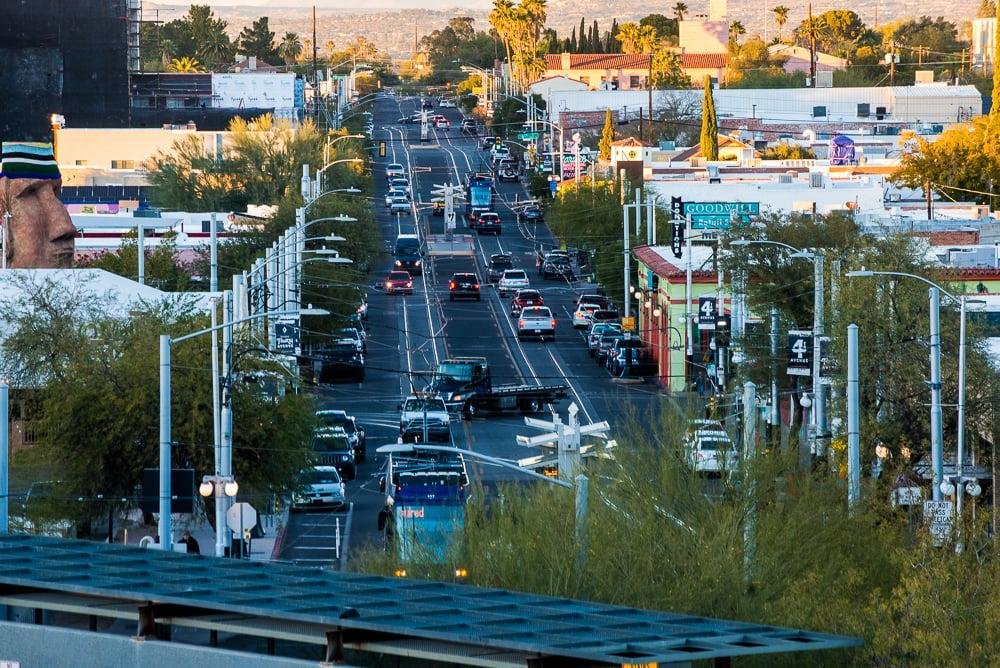Business
Tucson’s Housing Crisis: Can Community Corridors Tool Deliver 35K Essential Units?

Tucson is facing a significant challenge in affordable housing, with a demand for over 35,000 units projected over the next decade. In response, the Tucson City Council unanimously approved the Community Corridors Tool (CCT) on Tuesday, which aims to address this pressing issue.
The CCT seeks to reform the city’s zoning code to facilitate the development of affordable housing and enhance walkability. By relaxing certain restrictions, city planners hope to create an environment more conducive to diverse housing options.
According to county data, Tucson and Pima County have witnessed a staggering 68 percent increase in home prices since 2019, while rents rose by 48 percent. However, the average household income in the region only increased by 22 percent during this period. Consequently, homelessness in Tucson has surged by 53 percent since 2019, as documented in last year’s point-in-time count.
The U.S. Department of Housing and Urban Development defines “affordable housing” as any residence where occupants spend no more than 30 percent of their income on housing costs. Architect Corky Poster emphasized the urgency of the situation during the public comment period of the meeting. “We’re in a housing crisis at all levels,” he stated, suggesting that minor regulatory changes could facilitate significant development.
Current zoning regulations in Tucson permit high-density housing on only 12 percent of city properties. Furthermore, development is often stymied by hefty parking requirements and height limitations. City planners argue that outdated zoning has led to sprawling, car-centric development that doesn’t align with modern needs.
Efforts under the CCT include allowing multi-story buildings and eliminating mandated minimum parking spaces, which often contribute to extensive unused lots. Councilmember Karin Uhlich voiced concerns over the city’s excess office and retail spaces, underscoring a misalignment with current societal needs.
Koren Manning, head of Tucson’s Planning and Development Services Department, noted that the CCT aims not only to increase housing availability but also to promote climate resilience and transit accessibility. “We’re looking to create housing that meets multiple community objectives,” Manning stated.
While the majority of public speakers at the meeting supported the CCT, some expressed apprehensions about potential unrestricted construction in historic neighborhoods. Robert Freitas of the El Presidio Neighborhood Association articulated fears of “unchecked development” undermining the residential character of his historic community.
City officials assured the public that any development under the CCT would undergo a thorough application process that incorporates considerations for historic preservation. Mayor Regina Romero highlighted the necessity of targeted growth along major transit corridors while safeguarding residential character. “This initiative will streamline the housing process and stimulate creativity in our communities,” she said.
All council members voted in favor of the measure, though Councilmember Richard Fimbres did not cast a vote as he attended the meeting virtually. The CCT is set for review in two years.
Tucson zoning expert Rory Juneman expressed optimism about the initiative’s long-term impact, stating, “Infill is essential for the future of Tucson’s growth.” He believes that while its immediate effects may be modest, the next 10 to 20 years will reveal substantial changes in the city’s development landscape.
To date, Tucson has initiated over 1,100 units of affordable housing currently in planning or construction. The recent Milagro on Oracle project, which features 63 units for low-income seniors, represents a key step in addressing the city’s housing challenges.
To meet the demand over the next decade, Tucson must add an additional 34,172 affordable housing units.


















